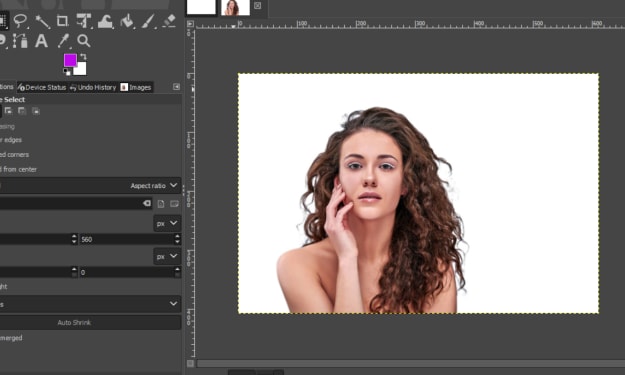Things to Consider for Beauty Product Photography
Product photography is a big segment of commercial photography. Beautify product photography is one of the big parts of product photography. In this context, we will talk about beauty product photography.

Product photography is a big segment of commercial photography. Beautify product photography is one of the big parts of product photography. In this context, we will talk about beauty product photography.
Let’s jump into the deep:
Definition of Beauty Product Photography
Beauty product photography is a specialized genre of product photography that focuses on capturing images of cosmetics, skincare, fragrance, haircare, and other beauty-related products. The goal of beauty product photography is to showcase these products in an aesthetically pleasing and enticing way, highlighting their features and qualities to attract potential customers.
Key elements of beauty product photography
Lighting: Proper lighting is crucial in beauty product photography. Soft, diffused lighting is often used to minimize harsh shadows and create a flattering, even illumination. This helps bring out the textures, colors, and details of the products.
Composition: Careful composition is essential to make the products visually appealing. Photographers may use various angles, close-ups, and arrangements to showcase the product's shape, packaging, and branding.
Props and Background: The choice of props and background plays a significant role in setting the mood and style of the photographs. Clean, minimalistic backgrounds are common for beauty product photography, but creative props and settings can be used to convey a specific theme or message.
Product Staging: Beauty products are often staged with attention to detail. This may involve arranging makeup brushes, arranging skincare products, or showing a product being used to demonstrate its application.
Retouching and Editing: Post-processing techniques are used to enhance the final images. This may include color correction, retouching imperfections, and ensuring that the product's colors are true to life.
Branding: Beauty product photography is often used for marketing and branding purposes, so it's important to incorporate the brand's identity, including logos, fonts, and color schemes, into the images.
Focus on Details: Beauty product photography often involves close-up shots to highlight specific product details such as texture, ingredients, and packaging design.
Consistency: When multiple products from the same brand are being photographed, maintaining a consistent style and look across all images is important for creating a cohesive brand image.
Beauty product photography is commonly used in advertising, e-commerce, social media marketing, and product catalogs to attract consumers and create a desire for the products being featured. It requires a combination of technical skill, creativity, and an understanding of the beauty industry to produce compelling and eye-catching images.
Importance of Beauty Product Photography in Marketing
Beauty product photography plays a crucial role in marketing for several reasons:
Visual Appeal:
Beauty products are highly visual, and attractive images can instantly catch the viewer's eye. High-quality product photography showcases the colors, textures, and overall aesthetic of the products, making them more appealing to potential customers.
Building Desire:
Well-executed beauty product photography can create desire and aspiration among consumers. It allows customers to imagine themselves using the products and experiencing the benefits, leading to increased interest and potential sales.
Brand Identity:
Consistent and professionally executed product photography reinforces brand identity. It helps establish a brand's visual style and communicates its values, whether it's luxury, eco-friendly, or innovative.
Trust and Credibility:
High-quality images instill trust in consumers. They convey professionalism and attention to detail, making customers more confident in the product's quality and authenticity.
E-commerce Sales:
In the age of online shopping, where customers can't physically touch or try products, photography serves as a substitute for the in-store experience. Detailed product images from different angles help customers make informed purchase decisions.
Storytelling:
Photography can tell a story about a product. For example, showing before-and-after photos in skincare product photography can demonstrate the product's effectiveness. Lifestyle shots can show how the product fits into a customer's daily routine.
Social Media Engagement:
Platforms like Instagram, Pinterest, and TikTok heavily rely on visuals. Engaging beauty product photography can generate user-generated content (UGC), encourage sharing, and increase brand exposure through social media.
Also Read: Why Professional Photographers Edit Photos
Differentiation:
In a crowded beauty market, striking and unique product photography can set a brand apart from competitors. It can help a product stand out on a shelf or in a crowded online marketplace.
Educational Value:
Beauty product photography can be used to educate consumers about a product's features, ingredients, and how to use it effectively. This information can be conveyed visually through labels, close-ups, and demonstrations.
A/B Testing:
Marketers often use different product images to test which ones resonate most with their audience. By analyzing metrics and customer responses, they can refine their photography to better align with consumer preferences.
Global Reach:
With the internet, beauty brands can reach a global audience. Photography is a universal language that transcends linguistic barriers, making it an effective tool for international marketing.
In summary, beauty product photography is not just about capturing images of products; it's a powerful marketing tool that can shape consumer perceptions, drive sales, and establish a brand's presence in a competitive industry. High-quality, visually appealing photographs are essential for effectively marketing beauty products in today's image-driven world.
Importance and Tips of Beauty Product Photo Editing
Beauty product photo editing is a critical step in the process of creating compelling and visually appealing images for marketing and promotional materials. Here are some reasons why it's important and tips for effective beauty product photo editing:
Importance of Beauty Product Photo Editing:
Enhancing Visual Appeal: Photo editing can improve the overall look of a product by adjusting colors, contrast, and sharpness. This makes the product more visually appealing and can attract potential customers.
Removing Imperfections: Beauty products are often displayed at high magnification, so any imperfections like blemishes, scratches, or dust particles can be very noticeable. Editing allows for the removal of such flaws.
Color Accuracy: Accurate representation of colors is crucial in beauty product photography. Editing can help ensure that the product's colors match what customers will receive, which builds trust.
Consistency: When multiple product images need to maintain a consistent look and style, editing is essential. It helps ensure that all images in a series have the same color balance and visual aesthetic.
Highlighting Features: Editing can be used to emphasize specific features of the product, such as texture, ingredients, or packaging details.
Tips for Effective Beauty Product Photo Editing:
Use High-Quality Editing Software: Invest in professional photo editing tools like Adobe Photoshop or Lightroom, as they offer a wide range of tools and features for precise editing.
Maintain Color Accuracy: Ensure that the colors in your edited images match the actual product as closely as possible. Calibrate your monitor to accurately represent colors, and use color correction tools in your editing software.
Retouching: Carefully retouch the image to remove any imperfections, such as blemishes, scratches, or dust. Be mindful not to overdo it, as overly retouched images can look unnatural.
Consistency is Key: If you're editing multiple images for a product line or a catalog, maintain a consistent style and look across all images. This includes consistent lighting, color balance, and background.
Texture Enhancement: Use editing tools to enhance the textures of the product, such as making the surface appear smoother or more detailed, depending on the product type.
Clipping Paths: Create clean, precise clipping paths or cutouts around the product to remove the background or create transparency. This is especially important for e-commerce images where products need to be placed on various backgrounds.
Dodge and Burn: These tools can be used to selectively lighten or darken areas of the image to add depth and dimension to the product.
Detail Enhancement: Use sharpening tools to bring out fine details in the product, like labels, text, or small patterns.
Batch Processing: For efficiency, use batch processing features in your editing software to apply similar edits to a group of images simultaneously, especially when working on large product catalogs.
Backup Originals: Always work on a copy of the original image, and keep the original files intact in case you need to make adjustments later.
Feedback and Revisions: If possible, seek feedback from colleagues or clients to ensure that the edited images meet their expectations and align with the brand's vision.
Effective beauty product photo editing requires both technical skill and an understanding of the product and brand's identity. When done correctly, it can result in stunning images that help drive sales and create a strong visual presence in the beauty industry.
About the Creator
Mustafa Sakib
I'm a digital marketer and SEO expert. Blogging is my passion. I love to share my thoughts and ideas, read books and blogs, travel, play cricket. You are always welcome to read my blog.






Comments
There are no comments for this story
Be the first to respond and start the conversation.